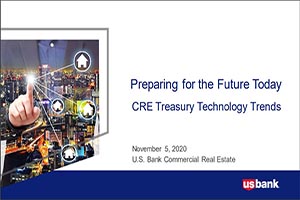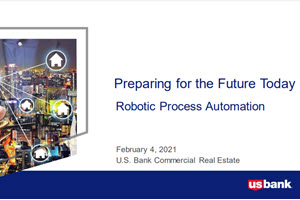What does the future of financial leadership look like, and how do recent advancements in liquidity management contribute to that reality?
Modern finance leaders, spanning many levels from treasurers to CFOs, experience a tug-of-war battle between using traditional, standard treasury processes and adopting new technological advancements for digital transformation. Such advances in technology are pushing even greater expectations on them to be gatekeepers of this information and provide meaningful insights through their reporting packages.
It all points to the question that we keep hearing from our clients: What does the future of financial leadership role look like? Will I be prepared for it?
Finance leaders have to optimize the cost of funding for the company and efficiently run cash management operations each day. This requires data that sits in disparate systems and is often inconsistent and not real-time.
As a result, they often must rely on quick-fix home grown solutions to ingest and analyze this massive amount of data. For many organizations, this manifests as spreadsheets put together every day by treasury analysts and AP/ AR operations from the data they are collecting from different sources.
“Financial back office technology is constantly evolving, with a number of fintech companies influencing and driving change,” said John Melvin, vice president and working capital consultant for U.S. Bank. “Although some organizations are still in spreadsheet mode, new applications that automate a number of manual AP/AR processes are being created.”
This article will address some of the key concerns facing modern finance leaders from the following four perspectives:
- Strategy
- Data and analysis
- Digital transformation
- Mindset
These aren’t the only factors facing finance leaders, but they’re the ones that are constantly evolving.
Changes in strategy
Surprisingly, the future of financial leadership might actually focus less on actual finance. Studies are showing that the demands of finance leaders are shifting more toward broader strategic discussions. They must be able to balance traditional finance with analyzing data and providing meaningful, practical applications.
One major impact area for this evolution involves liquidity management strategy. As markets and economies continue to change and adapt, organizations must likewise evolve to retain liquidity strength.
“Organizational leaders need to have these broader discussions because there’s simply so much more to account for in a liquidity management strategy,” said Mary Brause, senior vice president and group product manager for deposit and liquidity products in Global Treasury Management at U.S. Bank. “From global and regulatory impacts, lackluster interest rates, excess market liquidity and more, leaders need better visibility into what's going on in order to formulate and course-correct strategies and tactics.”
Changes in data processing and analysis
There are numerous tools that can capture data. There should be equal dedication to analyzing, adopting and predicting future actions prescriptively. Finance leaders must build a foundation of data insights that can capture customer intent and deliver on rising expectations for analysis.
“Everything from the balance sheet to the boardroom affects expenses," said Brause, "both working capital and long-term planning, and it all generates an extraordinary amount of data. You need to find the links to seemingly disparate data points in order to generate solid strategic plans and actions.”
The right digital solutions, according to Brause, are needs-based versus “tech for tech’s sake.” Avoiding the pitfalls of unnecessary and cumbersome digital implementation can mean the difference between success and failure, she said, adding “’analysis paralysis’ is a real risk.”
Digital transformation and financial technology
The future of financial leadership, and the future of liquidity management itself, will undoubtedly be more automated. Think distributed ledger technology (DLT, also known as blockchain) and cloud-managed services over spreadsheets. The use of manual tasks opens organizations to fraud risk, and as new threats rise every day, finance leaders will be under greater pressure to modernize liquidity processes.
“Updating and changing technology hasn’t always been a priority for most organizations when compared to other business needs. Unfortunately, most do not see the opportunity cost associated with technology changes, and only see value when events dictate change,” said Melvin.
“Given the economy and extended low rate environment we experienced starting in the late 2000s until a couple of years ago, and a pandemic that exposed operational inefficiencies, many companies and financial service providers weren’t investing large sums of money in tech upgrades. And now, companies are doing their best to balance cash preservation with the need to optimize business operations. Tech functionality is rapidly advancing, which will drive companies to evaluate the value of faster decision making at the strategic level. It also requires leaders to review their team’s skill set, which may lead to hiring finance and treasury personnel with IT experience.”
Technology adoption and the Digital Bridge
Tools and technology may drive the tactical changes for liquidity management, but there are philosophical barriers to modernizing liquidity processes. C-Suite executives aren’t usually hired to maintain the status quo, but attaining senior-level buy-in for any new technological initiative earlier in the process will help alleviate concerns later.
“We think of our client-forward process like building a bridge – a digital bridge – that gets our partners from wherever they are, over their unique operational obstacles, and on the right path toward their strategic goals,” Melvin said, “because we understand why so many organizations are reluctant to change due to unknown risks factors.”
What this means for liquidity management
In broad terms, the evolution of financial leadership also involves subsequent evolutions in liquidity management. Here are some of the largest changes that finance leaders can expect with their money management:
- New and/or changing global regulations regarding adequate liquidity
- Velocity at which payments can and will occur. What used to take days, hours and/or minutes can now happen in seconds, regardless of time of day.
- Evolving trade agreements and tariffs and their impacts on cash flow
However, despite the opportunities and uncertainties ahead, several constants in liquidity management remain. Even as new tech and strategies evolve, finance leaders can maintain the following best practices:
- Cash forecasting: focus on what is most meaningful for your company in terms of reporting frequency, scope and level of detail commensurate with your business strategy. Technology can support your efforts and may allow you to reallocate staff to towards other important revenue generating activities.
- Working capital: optimize your working capital needs by ensuring you have a strategy and thorough view into your company’s cash flow, sources of cash in times of shortfalls, and options for excess liquidity.
- Lead the way with data insights: Your organization manages a tremendous amount of data. Create a culture of strategic insight; don’t limit yourself to data reporting.
We’re still all in this together
The tidal wave of new technology, tactics and strategies can seem overwhelming. Many of the executives we’ve talked to worry that current skillsets will be obsolete in five years. But no matter how far you’ve come in your finance transformation strategy, or what obstacles lay ahead, U.S. Bank knows from experience how the next step forward begins with listening to our partners and delivering the right solutions based on their needs.









































































































